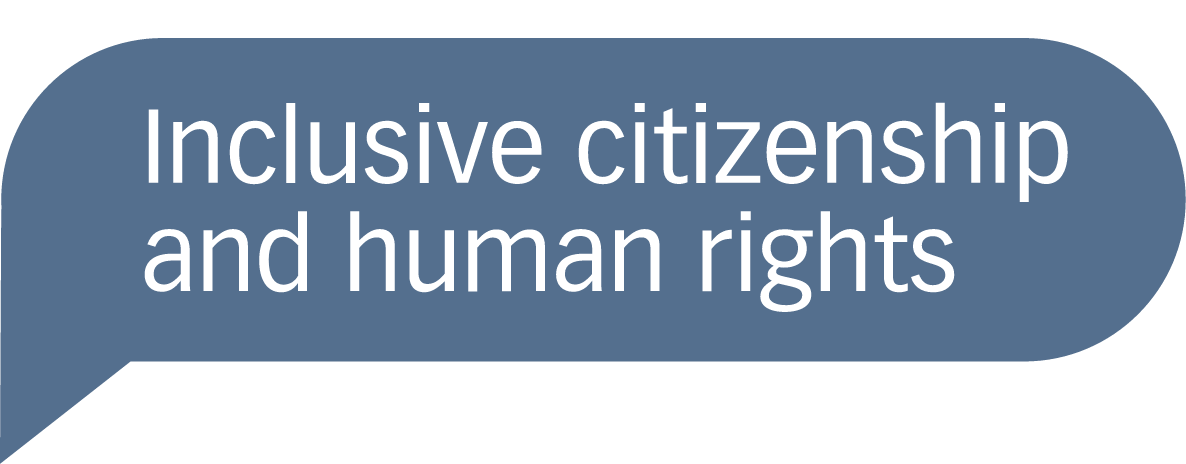
Hate narratives targeting minorities often rely on harmful stereotypes and misconceptions based on identity, such as religious beliefs, nationality, or gender. These narratives play a central role in shaping and reinforcing group hostility, influencing societal attitudes and behaviors.
This page explores group hostility, focusing particularly on antisemitism and anti-Muslim racism, and introduces tools like counter-narratives to help understand and address these challenges.
Hate Narratives and Counter-narratives
Narratives are limited and chronologically organized entities that describe phenomena and events and create causal connections. A central characteristic of narratives is that they are structured; i.e., they have a “plot,” and the use of narratives is a way of organizing, interpreting, and making sense of the world. Narratives relate to a social and cultural context and to fields of knowledge in terms of established discourses; i.e., they draw on shared frames of reference and vocabularies.
Minority groups face a range of online hate narratives that target them based on their religious beliefs, nationalities, and gender identities. These discourses frequently employ metaphors, comparisons, and symbols designed to dehumanize or stigmatize members of the groups.
One strategy to counter such rhetoric is the use of counter-narratives. This approach involves presenting stories and messages that directly challenge stereotypes by offering alternative perspectives and fostering a message of inclusion.
Hate narratives could be a key driver of group hostility, shaping perceptions and fueling exclusionary attitudes. Understanding these narratives provides insight into how prejudice manifests across different groups, from racial to religious communities.
Group Hostility
Group hostility refers to the systemic and collective attitudes that exclude and discriminate against specific groups, such as those targeted by hate narratives. From racism and antisemitism to homophobia and ableism, these forms of hostility share common roots in dehumanizing narratives and stereotypes.
Group hostility perpetuates prejudice and discrimination, targeting entire communities based on perceptions of shared characteristics. Differentiating between types of hostility allows for more targeted approaches to understanding and addressing the challenges faced by communities as well as individuals.
Religious Groups as Targets of Hostility
Dr. Fernand de Varennes, former UN Special Rapporteur on Minority Issues, talkes about hate speech against religious mintories.
Religious minorities are often targeted by group hostility, with Jews facing antisemitism and Muslims experiencing anti-Muslim racism. These prejudices stem from harmful narratives that focus on perceived group belonging, which means even non-Jews and non-Muslims can sometimes become targets of these stereotypes.
Antisemitism has deep historical roots. Manifestations of antisemitism include conspiracy theories, stereotypes, and derogatory narratives that among other things portray Jewish communities as disloyal, powerful, and as societal threats. Anti-Muslim racism likewise has multiple expressions, for example in narratives that associate Islam with violence or extremism, promoting fear and prejudice against Muslim communities.
These harmful narratives often spread rapidly through digital media, amplifying stereotypes and facilitating discrimination, exclusion, and violence. (Read more about online hate speech here.)
For a deeper understanding of these issues, explore our articles on antisemitism and anti-Muslim racism below.
What is Antisemitism?
Antisemitism refers to negative attitudes and actions directed against Jewish people. It has deep historical roots and manifests in various ways, including conspiracy theories, stereotypes, and narratives that portray Jewish communities as societal threats.
To learn more about the history, manifestations, and impact of antisemitism, read the full article here.
What is Anti-Muslim Racism?
Anti-Muslim racism or Islamophobia can be defined as widespread negative prejudices towards Muslims, false or grossly exaggerated negative claims about Muslims, and actions and practices that attack, exclude, or discriminate against people because they are, or are assumed to be, Muslims.
For an in-depth exploration of anti-Muslim racism read the full article here.
Want to learn more?
Head back to the “Hate Speech & Media Literacy” page for more.
Coverphoto: Håvard Bjelland



